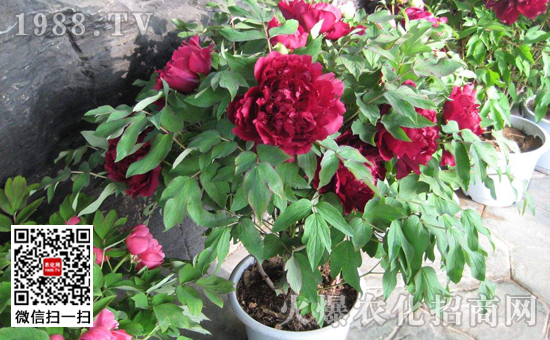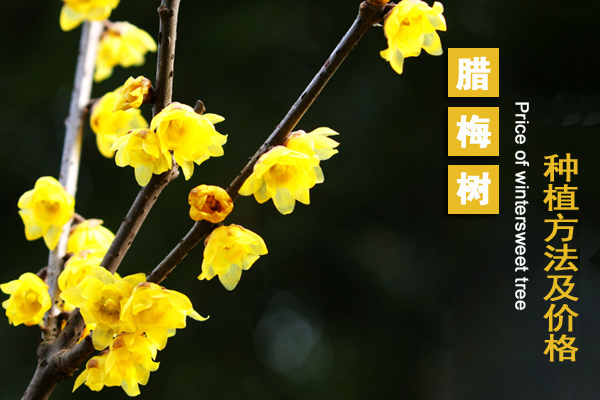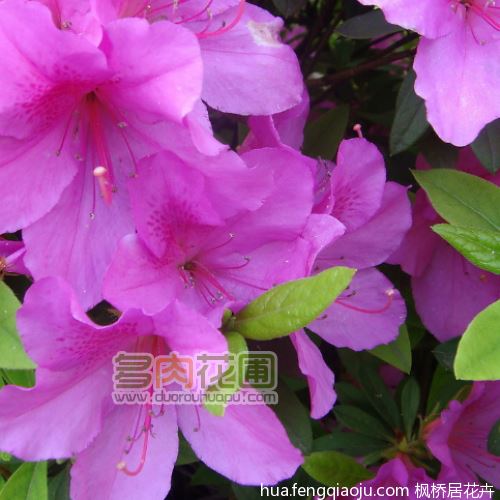Planting methods of potted peony
Potted peony planting method, peony is generally cultivated in the open field, if potted, we must pay attention to the following points in order to produce large and bright flowers.
The main results are as follows: (1) potted plants should choose varieties with strong adaptability, earlier flowering period and better flower type, such as Luoyang Hong, Erqiao (chrysanthemum type), Zhaofan (crown type) and so on. 3-year-old small peony grafted with peony as rootstock or ramet seedlings with 3 or 5 branches should be selected. It may not be able to blossom in the first year after potted plant, but it can blossom year after year if it continues to cultivate for 1 ~ 2 years.
(2) the flowerpot should choose bucket tile pot, which can be mixed with cake fertilizer and sandy loam, or mixed with fully rotten barnyard manure, garden soil and coarse sand. The suitable time for potting is from late September to early October. The peony should be dried for 1-2 days before planting to soften the roots for planting, cut off dead branches and overlong roots, and coat the wound with charcoal or disinfect with 1% sodium sulfate solution (about 5 minutes) to prevent bacterial infection. Before planting, use broken tiles to cover the drainage hole at the bottom of the basin, and then spread 3-5 cm thick pebbles to facilitate drainage. When transplanting, straighten the root, then fill it in layers, compaction with hand, make the root in close contact with potted soil, cover the soil to the root neck, compaction, leave about 3 cm along the mouth, water after planting, slow seedling in semi-shady place, slow seedling and transfer to normal management.
(3) in North China and other places, the weather is cold. The Beginning of Winter moved indoors and placed it in the sunny part of the frozen room and kept it at room temperature for 0 ℃. The second year before and after the Qingming Festival out of the room, put the leeward to the sun to maintain. Prevent exposure to the sun in summer. Star
(4) whether watering is proper or not is a key issue for the success or failure of potted peonies. After coming out of the room in early spring, apply compartment fertilizer once, then pour water thoroughly, loosen the soil after water infiltration, and maintain the humidity of the basin soil until budding. If the basin is too dry, you can pour a small amount of water again until it blossoms, and it is appropriate to keep the basin soil moist after that. On rainy days in summer, the stagnant water in the potted flowers should be dumped in time to prevent rotting roots. Pour water once before winter, and apply fully mature thin fertilizer water. During the leaf expansion of tree peony in early spring, topdressing liquid fertilizer twice, applying liquid fertilizer twice after flowering, and applying dry fertilizer once in summer (about 50g per pot) are beneficial to flower bud differentiation.
How to grow potted peonies? Planting methods of potted peony
Many people like to plant peonies, so do you know how to grow potted peonies? Next, the editor will introduce the planting method of potted peony to you in detail.

Planting methods of potted peonies:
1. The most suitable planting time for potted peony is from September to early October. Early planting will be easy to grow in autumn. "too late will cause slow root growth, poor plant growth, and serious peony wilting in the coming year."
two。 Peony seedlings must be dried for 1-2 days before planting to soften their roots so as to facilitate pruning and planting. Before, it is best to pad a tile with a drainage hole at the bottom of the flowerpot to prevent soil leakage, and then you can cover it with pebbles 2-5 cm thick, which can help drain water.
3. Watering potted peony because the seedlings are relatively small, so watering must be less, but not drought, one more watering can better promote the growth of peony, watering too much will cause rotten roots of peony.
4. Fertilizing peony had better start topdressing in the spring of the following year, and it is best to use sesame, peanut and bean cake blisters after fermentation, which can promote the growth of peony flowers.
5. The prevention and control of peony diseases is very few, as long as the use of targeted pesticides to control them, these diseases can be effectively avoided.
Planting methods of potted peony at low latitudes in South China
In the south of the Yangtze River, most of the soil is sour. High temperature and humidity, precipitation in 1100-1700mm, mainly spring rain, Meiyu and Taiwan wind and rain, in which plum rainfall in 400-600mm, air humidity close to 80%. The content of rich iron, aluminum, low calcium and magnesium, soluble salt and carbonate in soil is very little, especially the substitution base is seriously insufficient. This makes the environment, climate and soil factors in the south of the Yangtze River completely different from most peony producing areas, coupled with the misleading of seedling vendors who promote potted flowers and are not suitable for planting in the market. as a result, many flower lovers who love peony have lost their confidence in planting peony. In order to make the flower king of national color and fragrance be accepted by the flower friends in the south, and blossom well and enter the popular planting, the author will put forward some views and suggestions on the cultivation of potted peony in the low latitudes of the south.
I. cultivated soil and containers
Because peony is suitable for neutral or weakly alkaline soil, cuttlefish bone can be added if the cultivated soil is sour (cuttlefish is a mollusk, a dorsal bone in the middle of the meat back, rich in calcium carbonate, calcium phosphate, magnesium salt and other nutrients needed for the growth and development of peony). 100 parts of sandy loessial soil, 2 parts of cuttlefish bones and 1 part of rotten oil fertilizer (animal fat-viscera, lower kernels are sealed in a container and exposed to the sun) are fully mixed, sealed and fermented. The first choice for cultivation containers is tile basin, followed by purple sand. If you choose a ceramic basin, the drainage hole must be big enough, and a layer of brown clothes should be added to the basin wall to facilitate drainage and ventilation.
2. Seedling and upper pot
Black building purple and other Jiangnan suitable varieties are preferred for seedlings, and varieties with rich flowers and colors can be selected from Zhongyuan dwarf peony, Yangshan peony, purple spot peony and southwest and foreign varieties. Except for root cutting and injured roots, the original roots of seedlings generally can not be cut (the roots store the nutrients needed for growth and development, the cut is easy to rot, and the healing of the cut consumes nutrients). The suitable time for potting is from late September to October. When potting, the roots should be coiled in a container to fill the soil, compacted and then poured with water.
III. Daily management
The peony needs to be dormant when the temperature is below 4 degrees. If the local conditions are not available, the peony can be moved to a high place for the winter. The temperature decreases by 3 degrees for every 500 meters above sea level, and the moisture in the dormant period is dry and wet. Enough water is needed after sprouting, and water control at flowering stage can prolong flowering period. It is better to irrigate in the early morning in summer, and to control water and prevent autumn hair in autumn. If there is little potted soil, the root is sprayed once a month after sprouting, the grease fertilizer is irrigated once a week during the growing period, and the grease fertilizer is applied once in winter, and the principle of applying more thin fertilizer is adopted. In dog days, Meiyu and typhoons, peonies can be moved to south-facing eaves and balconies can be maintained to prevent unnecessary losses such as excessive evaporation of moisture, loss of nutrients and breaking branches and leaves. In order to concentrate nutrients or beauty, sprouting soil buds, leaf buds, axillary buds and top dry branches should be cut off as soon as possible, except for new branches or buds as bonsai. Pest control; pest control is generally rare. After sprouting, zinc is sprayed once, and carbendazim, methyl thiophanate and other fungicides are sprayed once every two weeks during the growing period. Pay attention to the occurrence of physiological diseases.
- Prev

How to plant preserved plum trees
Lamei is a deciduous shrub native to Jiangsu, Zhejiang, Anhui and other places in China. Like slightly acidic soil, has been cultivated in China for a long time, is a winter flower with good color and fragrance, flowering for as long as 3 months, not only can be cultivated in open field, but also can be potted as bonsai. Flowers can extract aromatic oil
- Next

Cutting methods of Rhododendron
In the cutting method of rhododendron, cutting method is often used to propagate rhododendron. Rhododendron cuttings can be carried out from April to August, and the matrix is better with sediment in the gully, or can be replaced by river sand. After screening, 1% potassium permanganate is used for sterilization and placed in a tile basin for use. Use your hands to pick up the semi-lignified branches of the year.
Related
- Fuxing push coffee new agricultural production and marketing class: lack of small-scale processing plants
- Jujube rice field leisure farm deep ploughing Yilan for five years to create a space for organic food and play
- Nongyu Farm-A trial of organic papaya for brave women with advanced technology
- Four points for attention in the prevention and control of diseases and insect pests of edible fungi
- How to add nutrient solution to Edible Fungi
- Is there any good way to control edible fungus mites?
- Open Inoculation Technology of Edible Fungi
- Is there any clever way to use fertilizer for edible fungus in winter?
- What agents are used to kill the pathogens of edible fungi in the mushroom shed?
- Rapid drying of Edible Fungi

